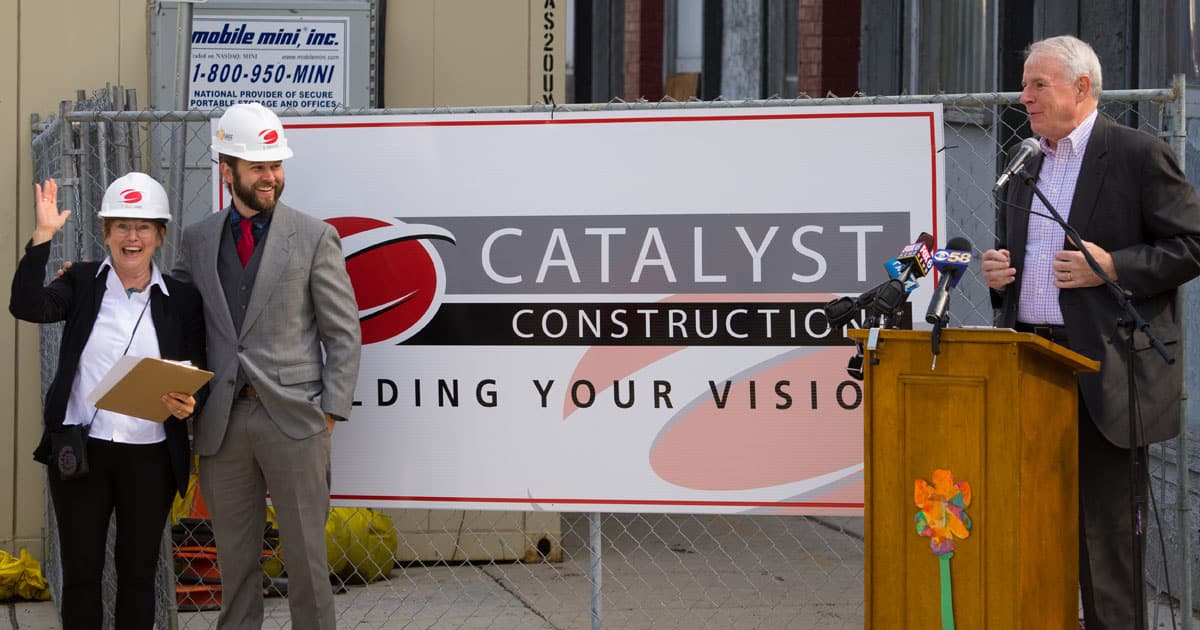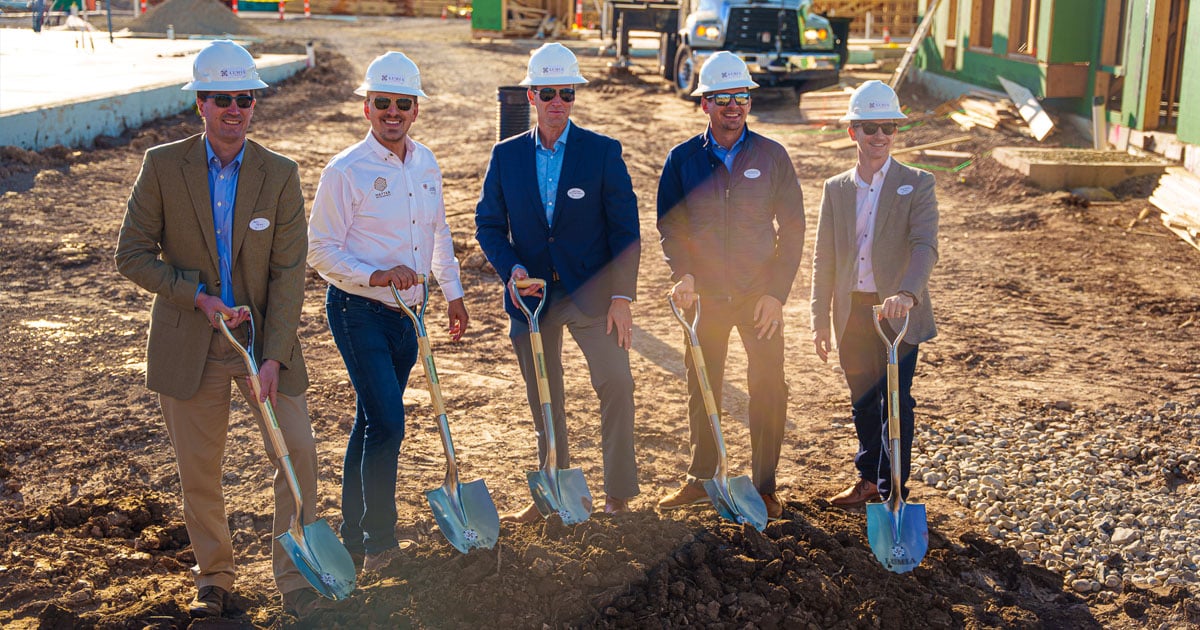The atmosphere was electric as the groundbreaking ceremony got underway. The warm sun beamed down on the group, illuminating the glimmering shovels they held in their hands. The team members stood shoulder to shoulder in front of a sea of excited faces, ready to start the next chapter of this long-awaited project.
There was a palpable sense of anticipation and possibility in the air as they began digging into the ground, marking the beginning of something truly special. As the dirt was lifted and moved aside, the group felt a swell of pride and accomplishment wash over them.
It was clear that this moment would be etched in the memories of all those present. The groundbreaking ceremony symbolized progress and the start of a journey toward something great.
The Groundbreaking Ceremony: A Symbol of Progress and the Start of a Brand New Story
A groundbreaking ceremony marks a significant milestone in any construction project. It represents the start of a brand new story, a journey toward progress and growth. This event is a symbolic gesture that brings together project stakeholders, contractors, and the community to celebrate the beginning of something special.
A successful groundbreaking ceremony paints a picture of a future that a community can envision being eager to step into. A story that they can be proud to be a part of, and while your organization may be able to see the bigger picture for the project ahead, not everyone can visualize this potential, and even fewer people understand the work required to get to the point where you can get a shovel in the ground.
That’s why it’s so important to have a plan in place. The planning for a groundbreaking ceremony should begin months in advance and involve the entire project team and the community at large. This will ensure that everyone understands the event’s significance and the occasion’s importance.
Planning Your Groundbreaking Ceremony: 5 Key Steps for Success
Planning a successful groundbreaking ceremony requires careful consideration of the event’s purpose, audience, and location. These components are necessary for the event to have cohesion and provide more benefit to the community, which could lead to speculation and concern amongst the community. Don’t leave any room for misinterpretation or ambiguity when planning your groundbreaking ceremony – use these tips to ensure your event is a success!
1. Establish the Key Players Involved
Identifying and involving the key stakeholders is crucial for success when planning a groundbreaking ceremony. These individuals represent the business, property owner, and community members directly affected by the event.
Each stakeholder has a vital role to play in the ceremony, and it’s essential to define their responsibilities in advance. For example:
- Project sponsors: They are the primary drivers of the project and often play a central role in organizing the ceremony.
- Architects and engineers: They are responsible for the design and planning of the project and can provide valuable insight into the significance of the groundbreaking.
- Contractors: They are responsible for the construction and execution of the project, and their presence at the ceremony can help showcase their involvement and commitment to the project.
- Government officials: They are often invited to the ceremony to show support for the project and its potential impact on the community.
- Local community members: They can provide an important voice for the community and help generate excitement and support for the project.
Once the key stakeholders have been identified, it’s crucial to communicate with them to ensure their attendance at the ceremony. Here are some tips for effective communication:
- Personalized invitations: Send personalized invitations to each stakeholder to make them feel valued and emphasize their attendance’s importance.
- Follow-up calls or emails: Follow up with each stakeholder after sending invitations to confirm their attendance and answer any questions they may have.
- Provide clear details: Ensure that all stakeholders have a clear understanding of the date, time, and location of the ceremony, as well as the schedule of events.
- Make it easy for them to attend: Consider providing transportation or other support to make it as easy as possible for stakeholders to participate in the ceremony.
After you’ve touched base with all key stakeholders and received their confirmation, it’s time to start planning the ceremony itself.
2. Create a Schedule of Events
Creating a schedule of events for a groundbreaking ceremony helps to ensure that the event runs smoothly and that all participants know their roles. A well-crafted program will provide clarity and structure to the event, allowing all participants to understand the order of events and the timeline for each activity.
Additionally, having a schedule will help ensure that all activities are completed efficiently, allowing the ceremony to be completed in a timely fashion.
Finally, having a schedule of events will ensure that all participants know their roles and responsibilities during the event, keeping them prepared and organized.
Here are some tips for ensuring a smooth flow of events during the groundbreaking ceremony:
- Create a detailed timeline of each activity and assign roles to each participant.
- Have a designated person manage the timeline and ensure each activity is completed on time.
- Have someone designated as the emcee to introduce speakers and keep the event running smoothly.
- Make sure that all participants are aware of their roles and responsibilities before the event begins.
- Have a backup plan in case any unexpected issues arise during the ceremony.
- Make sure that all necessary supplies are available before the event begins.
- Have someone designated as the photographer to capture photos of the event.
3. Organize the Necessary Equipment and Materials
Organizing the necessary equipment and materials is crucial for a successful groundbreaking ceremony. Here are some tips for identifying what you need and how to acquire and transport it:
Identify the Equipment and Materials Needed for the Ceremony
The equipment and materials needed for a groundbreaking ceremony will depend on the specific requirements of the project and the ceremony. However, some common items required may include:
- Shovels and hardhats for the ground-breaking ceremony
- Protective gear such as hard hats and safety vests
- Audio equipment for speeches and announcements
- Signage and decorations
- Chairs and seating arrangements for attendees
- Refreshments for attendees
Every event will be different, so it’s important to be flexible and make changes as needed.
Discuss How to Acquire and Transport Equipment and Materials to the Ceremony Location
Once you have identified the necessary equipment and materials, you must acquire and transport them to the ceremony location. Here are some tips to help you:
- Rent or purchase equipment: Determine what equipment you need and whether you will rent or purchase it. If you are renting, make sure to reserve it in advance to ensure availability.
- Arrange for delivery and pickup: If the equipment and materials are delivered, provide clear instructions on the location and timing of delivery. Similarly, make sure to arrange for the pickup or return of any rented equipment.
- Transport equipment: If you need to transport equipment yourself, rent a truck or van to safely accommodate the equipment and materials.
Don’t forget to create a checklist of all equipment and materials needed for the ceremony to ensure that nothing is forgotten or left behind. Also, create a schedule of when the equipment and materials should be made available at the ceremony site and returned after the event.
4. Invest in the Right Marketing and Promotional Tactics
With all the event details planned and the guests invited, the next thing to consider is how to market the event. This is the most important part of the planning process because it is the first step in generating excitement and getting people to attend the event.
Here are some great tips for promoting the ceremony to the local community and creating excitement and buzz for the celebration:
Promoting the Ceremony to the Community
How you approach promoting your groundbreaking ceremony will differ greatly depending on your audience. However, some of the best tactics worth investigating include the following:
- Utilize social media: Use social media platforms like Facebook, Twitter, and Instagram to create posts and stories about the ceremony. Make sure to tag key stakeholders and sponsors to increase visibility.
- Create a press release: Write a press release announcing the ceremony and distribute it to local media outlets. This will help generate interest and coverage in the community.
- Leverage email marketing: Send email invitations to key stakeholders and community leaders, encouraging them to share the invitation with their networks.
- Create flyers and posters: Design eye-catching flyers and posters with all the relevant information about the ceremony, and display them in high-traffic areas like community centers and local businesses.
No matter which tactics you choose, you want to make sure you capture the story behind the event and share it in a way that genuinely captures the spirit of the event and the people involved.
Creating Buzz and Excitement about the Event
As word spreads about the event, you’ll want to engage with community members and stakeholders and create additional buzz. This can be done through many tactics, including:
- Plan pre-event activities: These can take the form of a kickoff event, a ceremony that formally recognizes the importance of the project, or a community potluck to celebrate those that the new project will most impact.
- Involve the community: Schedule a town hall meeting to engage community members in a conversation about the event. Invite stakeholders, leaders, and business owners to the event to demonstrate and allow them to share their input and answer community questions.
- Offer incentives: Depending on the scope of the event, you can offer incentives to the public to participate on the day of the celebration, like offering free food or entertainment or even discounts to local businesses.
- Create a hashtag: If you’re using social media to promote the event, especially Facebook, Twitter, Instagram, and even TikTok, you’ll want to consider creating and sharing a hashtag to connect with event participants. This not only allows your team and the community to connect with each other easily, but it also allows you to keep track of any feedback or questions that may come up.
5. Welcome the Community With Open Arms
Welcoming community members to the groundbreaking ceremony with open arms is essential to creating a sense of inclusivity and building community engagement. Consider having interactive stations or activities like a photo booth or a community mural to encourage day-of activity. You could also offer refreshments or small giveaways to attendees, like branded water bottles or tote bags.
Encouraging community members to engage with one another and participate in the activities can help create a memorable experience for everyone involved. By showing appreciation for their attendance and encouraging their participation, community members are more likely to feel connected to the project and invested in its success.
The Groundbreaking, Future-Shaping Help You Need is Here!
People need to be invited into a brighter future. At Catalyst Construction, we not only build beautiful buildings – we craft compelling stories.
Breaking ground, building buildings – telling stories – is what we do. We give every project our full attention regardless of the scale.
Why?
Because we believe that people matter, you matter. We want to help you do your part in making the world a better place.
Reach out today to learn more about how we can come alongside you in your journey.








